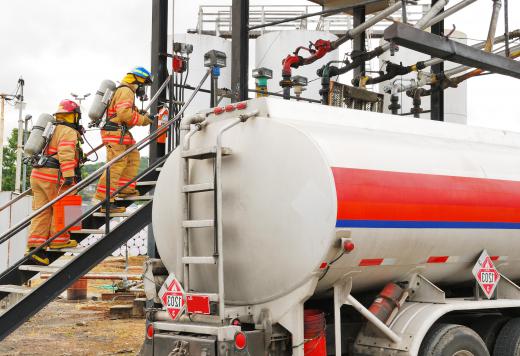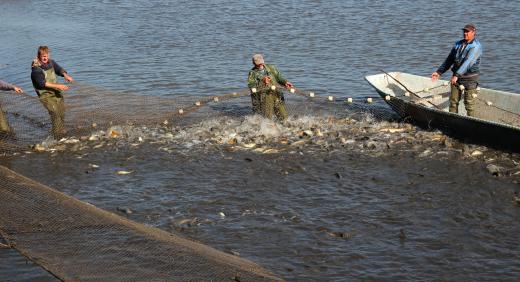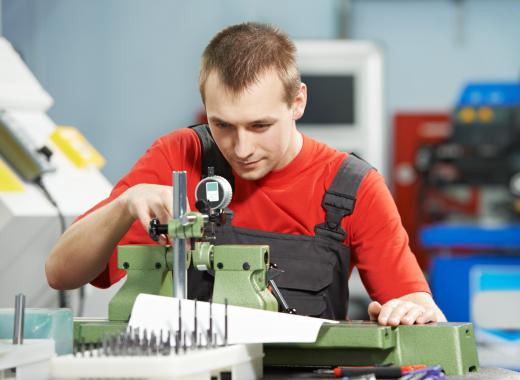Coveralls are a one piece garment designed to fit loosely over the body of a worker to protect clothing worn underneath from workplace trauma and dirt. Mechanics, painters, fishermen, train engineers, and assembly line workers often wear coveralls, as do pilots, and firefighters, who wear specially designed fire resistant ones.
A true set of coveralls covers the entire body from wrists to ankles, and sometimes comes with a hood as well. They are designed from sturdy material that can withstand the rigors of the work environment, and they are typically beige, blue, dark green, or another similar color which will not show dirt as readily. Many workers keep their coveralls in a work locker, sliding them over their day clothes and taking them off at the end of the day. During a lunch break, a worker can remove this top layer to relax.

Another version of coveralls, overalls, consists of a set of long pants and a bib held up with straps. Overalls do not offer arm protection, but they are cooler in hot weather, and provide adequate torso and leg protection to the wearer. Fishermen, for example, often wear waterproofed overalls that allow their arms freedom of movement but protect their legs from cold water; animal handlers who work with aquatic animals may also wear overalls.

There are many modifications that can be made to coveralls for various work environments. Flight suits and firefighting gear are made from flame resistant materials and heavily lined so that the wearer will be protected from the high temperatures of a fire. Some coveralls are waterproofed for various work environments, while others have heavily reinforced knees to protect workers who bend and kneel a great deal over the course of the day. Construction workers and road workers may wear bright colors to make them more visible, and most coveralls are covered in straps and pockets to attach the tools of the trade.

When picking out coveralls to wear, the buyer should wear clothing that would be worn to work to try on under them. They should have a loose fit that permits a wide range of motion, and they should not bunch or gather. Working coveralls are protective gear, not a style statement, but they should not sag or bag too much, as they could snag on equipment. On job sites that require coveralls, workers should ask the company if they are provided before purchasing a pair, as some companies stock specific styles for their workers.
Ever since she began contributing to the site several years ago, Mary has embraced the exciting challenge of being a About Mechanics researcher and writer. Mary has a liberal arts degree from Goddard College and spends her free time reading, cooking, and exploring the great outdoors.

